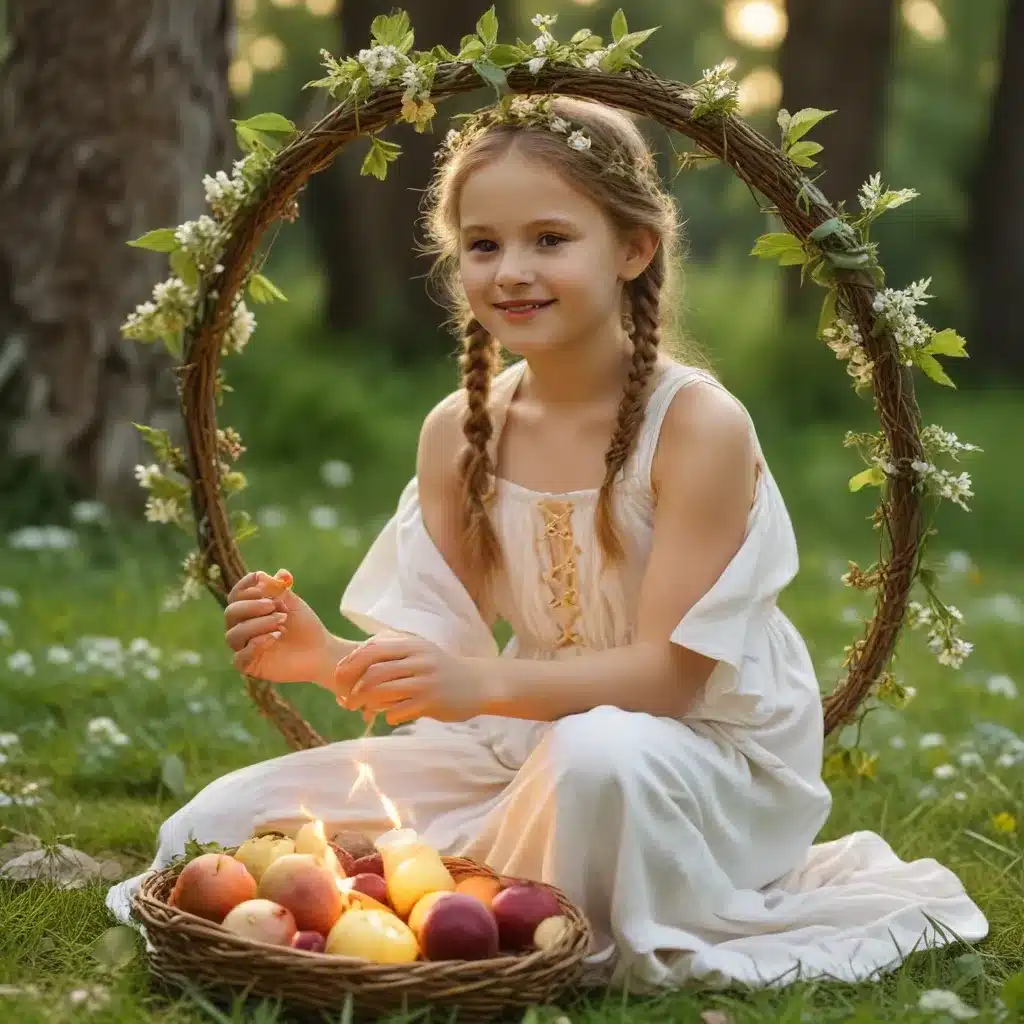
As the longest day of the year approaches, the summer solstice invites us to revel in nature’s enduring cycle. This ancient celestial event, marked by the sun’s annual peak in the northern sky, has inspired cultural and spiritual celebrations for millennia. At Crooked Pines Farm, we embrace the opportunity to honor the solstice through time-honored Midsummer traditions.
The Significance of the Summer Solstice
The summer solstice, occurring annually on June 20, 21, or 22, marks the astronomical beginning of summer in the Northern Hemisphere. On this day, the sun reaches its highest point in the sky, resulting in the longest period of daylight. This pivotal moment in the solar calendar has held profound significance for cultures around the world, serving as a touchstone for agricultural rhythms, spiritual practices, and communal traditions.
Midsummer, as this celebration is known in many European and Scandinavian regions, is deeply rooted in pre-Christian pagan rituals honoring the sun’s cycle and the abundance of the summer season. The solstice was seen as a time of heightened mystical energy, when the boundaries between the mortal and supernatural realms were believed to thin. Bonfires, feasting, and revelry were central to these ancient festivities, which often incorporated themes of fertility, cleansing, and the anticipation of the year’s harvest.
Midsummer Traditions Around the World
Across the Northern Hemisphere, diverse cultures have developed their own unique Midsummer celebrations, each with its own customs and significance. These rich traditions continue to be observed today, offering a vibrant connection to our shared heritage.
In Scandinavia, the Midsommar festival is a beloved national holiday, marked by the raising of the maypole, the wearing of flower crowns, and the consumption of traditional foods like pickled herring, new potatoes, and strawberries. Families and communities gather to sing, dance, and indulge in the magical atmosphere of the long, lingering twilight.
Farther east, Slavic peoples celebrate Kupala Night, or Ivan Kupala, on the eve of the solstice. This festival is characterized by the lighting of bonfires, the gathering of medicinal herbs, and rituals involving water, such as bathing in rivers or jumping over flames. The Slavic god Kupala is honored as a deity of fertility, cleansing, and the life-giving powers of nature.
In the Celtic tradition, the solstice is known as Litha, a time to honor the sun god and the abundant, verdant landscape. Druids and Wiccans may gather at ancient sites like Stonehenge to witness the sunrise and engage in rituals of renewal and connection with the natural world.
Symbolism and Mythology of Midsummer
Across cultures, the summer solstice has been imbued with deep symbolic meaning, often associated with solar deities, transformation, and the cyclical nature of life. In many belief systems, the solstice represents a pivotal moment of balance, when the sun is at the height of its power before beginning its gradual descent toward the winter months.
Fire, as a representation of the sun’s radiance, is a central element of Midsummer celebrations. Bonfires and fireworks are lit to honor the sun, drive away evil spirits, and symbolize the warmth and illumination of the summer season. The act of jumping over the flames is believed to bring good luck and fertility.
Midsummer is also strongly linked to themes of abundance, renewal, and fertility. The solstice is seen as a time when the natural world is at its most lush and fruitful, inspiring rituals and beliefs centered around ensuring a bountiful harvest and the continuation of life. Flowers, herbs, and greenery hold special significance, often used in the creation of flower crowns and garlands.
Midsummer Feasts and Gatherings
Across the globe, Midsummer festivities are characterized by communal gatherings, the sharing of traditional foods and beverages, and a spirit of revelry and celebration. These joyful festivities bring people together to mark the height of the summer season.
In Scandinavia, the Midsommar feast is a highlight of the celebrations, featuring pickled herring, freshly dug new potatoes, cured salmon, and the beloved summer treat of strawberries and cream. These dishes are often accompanied by the consumption of aquavit, a traditional Scandinavian spirit, and the singing of lively drinking songs.
Music, dance, and games are also integral to Midsummer celebrations. The maypole, adorned with flowers and greenery, is a centerpiece of festivities, as revelers gather to sing and dance around it. Other popular activities include lawn games like kubb, in which players attempt to knock over wooden blocks by throwing wooden sticks.
Nature’s Bounty and Midsummer Rituals
Midsummer’s deep connection to the natural world is reflected in the many rituals and beliefs surrounding the gathering of medicinal herbs, the making of flower crowns, and the cleansing power of water.
In the Slavic tradition, the solstice is seen as a time when the healing properties of plants are at their peak. Women may rise early to gather a specific number of herbs, such as 77.5 varieties, to use for cures and charms throughout the year. Similarly, Estonian midsummer celebrations involve the picking of flowers and the creation of flower wreaths to be worn as protection against evil spirits.
The purifying and rejuvenating qualities of water are also celebrated during Midsummer. In Scandinavia, it was traditional to bathe in natural springs or streams, believing the water to hold special powers on the solstice. The act of jumping over bonfires or rolling flaming wheels was also seen as a method of cleansing and renewal.
As the sun reaches its zenith and the natural world flourishes, Midsummer offers us a chance to connect with the rhythms of the Earth, honor our ancestral traditions, and revel in the abundance of the summer season. Whether you choose to light a bonfire, crown yourself with flowers, or simply bask in the glow of the long summer days, the spirit of Midsummer can be celebrated in countless joyful ways.


